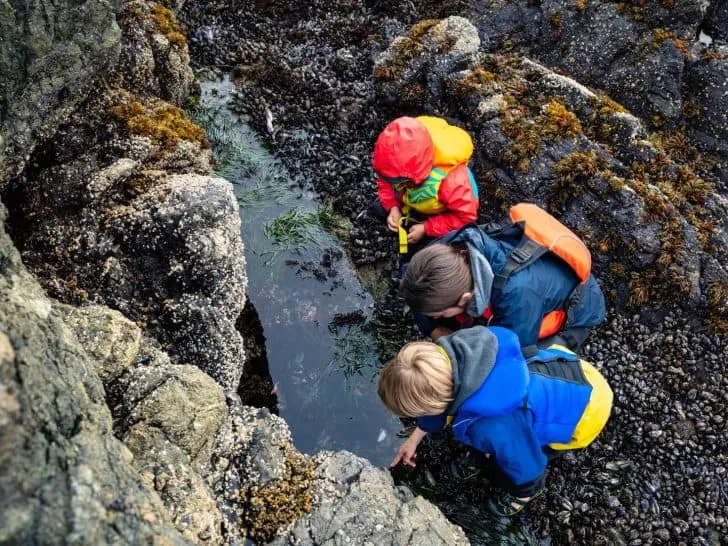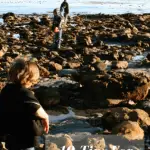There are few better ways to spend a day with the family than at the beach building sand castles and exploring tidepools. With a healthy dose of clean, salty ocean air and the chance for discovery,tide pooling is a visceral experience. But, are tide pools safe? They are free therapy courtesy of Mother Nature, but there are definitely some things to know before you go explore.
Are Tide Pools Safe? First, Check the Tide Table
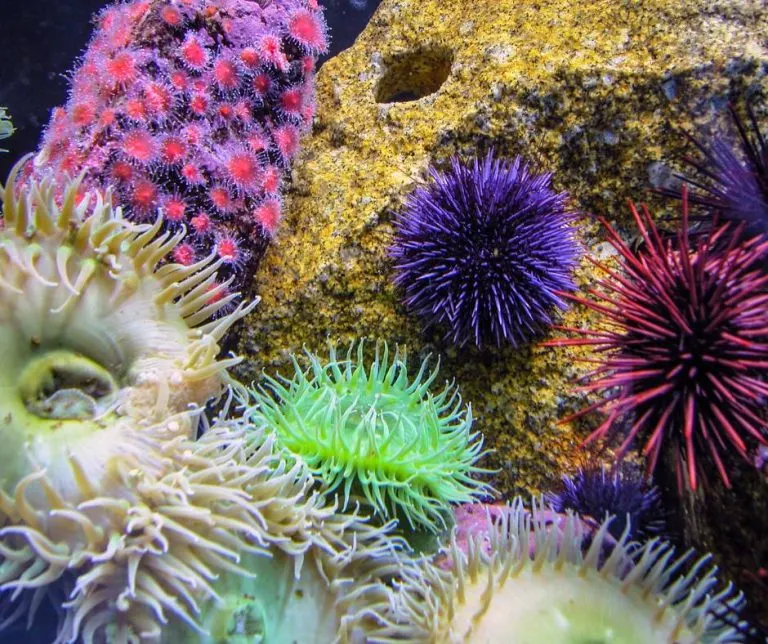
By checking the tide table before you go, you can optimize your experience in the pools. Most tide pools are only exposed at low tide when there is a minus tide. Plan to arrive about an hour before low tide.
If you arrive at high tide, you will disappointed to discover that these marvelous ride pools filled with life will underwater and largely inaccessible. The lower the tide, the more likely you are to discover more variety of sea life.
These are our favorite California tide pools.
Dress Appropriately
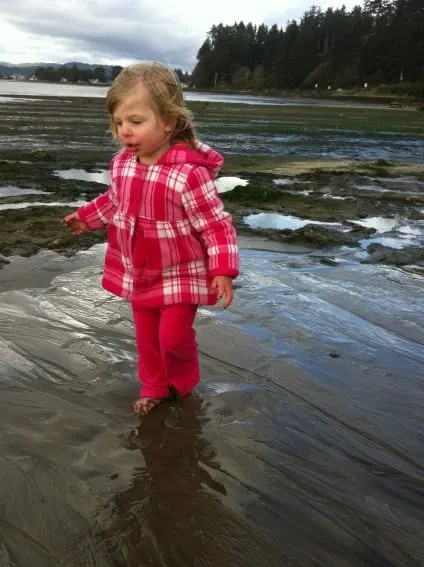
Tide pooling is a year round activity but often some of the lowest tides come in winter. If it’s a cold day, dress your kids in boots and rain gear and bring a towel with a change of clothes.
Some tide pools are quite rocky so soled shoes are key. On a warm day, dress them in clothes they can get wet in. Part of the fun of summer tide pools exploration is getting wet!
Wear Shoes with Good Soles
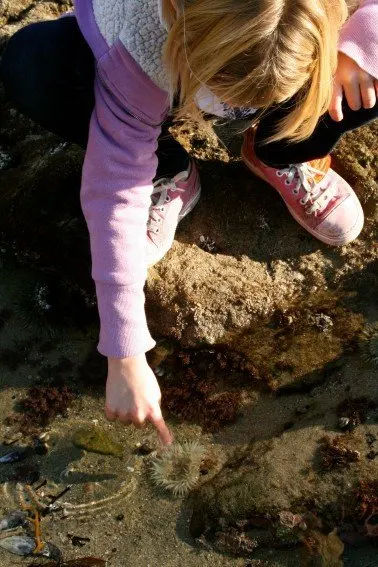
Make sure everyone in your grouphas shoes that have good grip and are closed toed. Flip flops don’t have good grip, and I have learned the hard way that you can lose a flip flop to shallow water suction.
Shoes should be able to go from rugged, sharp rock to slick, wet stone. In the winter, we like to wear water resistant hiking shoes and in the summer, hard-soled sandals like Tivas are best.
Be Respectful of the Sea Life
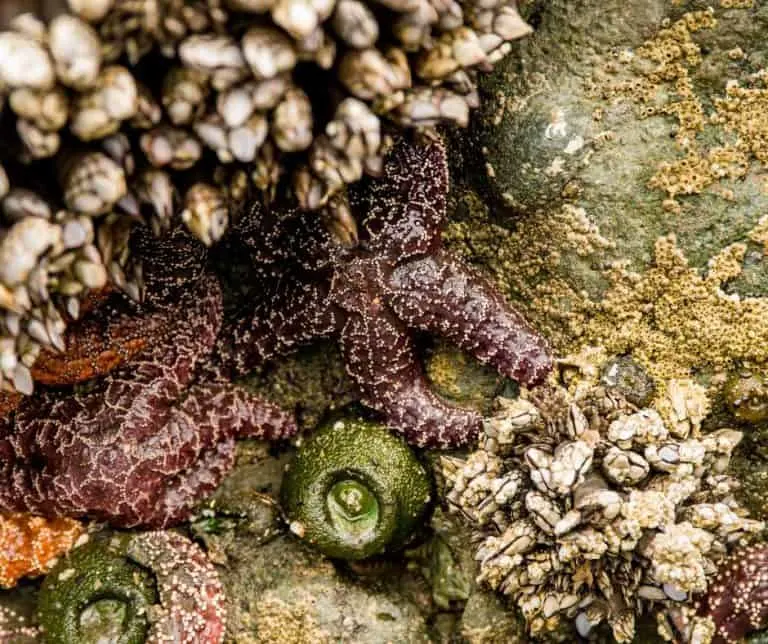
Explore with a magnifying glass. Kids just love to get up close and personal, but remind your kids to be respectful of the wildlife. Remember, no prying creatures off rocks, or poking them with little fingers.
Encourage children to lift up seaweed and peer beneath or lay on bellies and watch for any movement in a pool. Keep everything where you found it and be sure to never bring anything home from the pools. Some tide pools, like at Laguna Beach, have docents or educators at the pools to help remind visitors of these rules, or answer questions to curious minds.
Never Leave Children Unattended
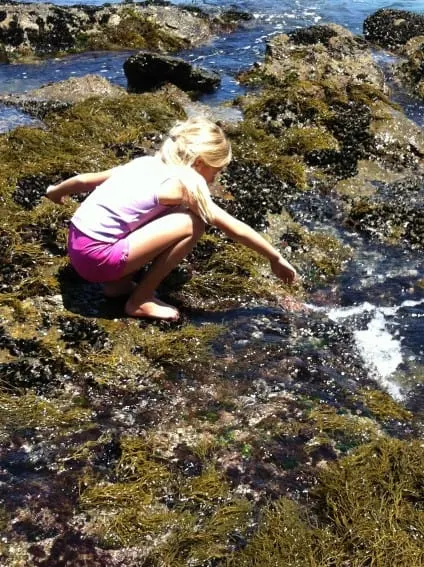
Never leave a child to explore the tide pools on their own and be sure to never turn your back to the ocean. A sudden large wave (known as a sneaker wave) might come crashing in and knock your child over.
It will be just a second before they get swept out to sea if there are strong currents. Be respectful of the ocean and that means, know her power! Always check surf reports before heading to the beach.
Let Kids Educate Themselves
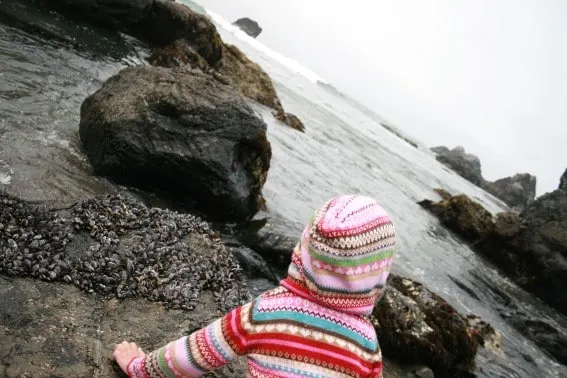
Pick up a colorful, pocket field guide so that kids can identify the plants and animals they come across. Most guides are laminated and can get wet if dropped in water. Here’s a list of field guides and resources to teach kids about tide pools.
Tread Lightly
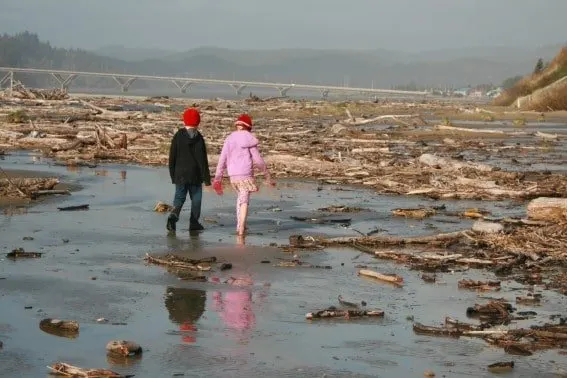
Look where you step because many places are homes to little creatures. It’s hard for kids to tread lightly, but it’s good to remind them that there are animals, like snails, even on the exposed rocks. It is easy to step on a hermit crab creeping by, so just be sure to remind everyone to watch where they step.
Be Aware of the Tide
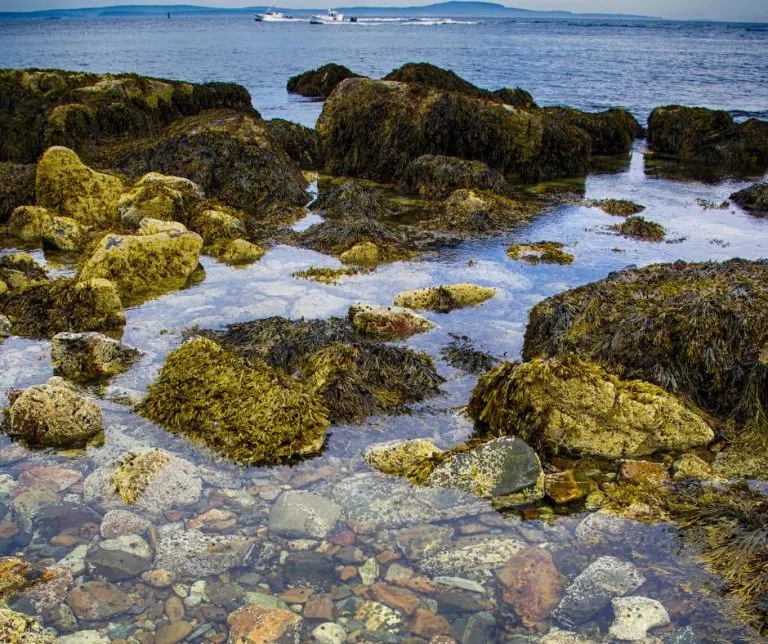
Always beware of the rising tide and your route back to the the beach. Don’t let the rising tide cut you off. Just as you research before you arrived when the tide would be low, know when the tide will be coming back in.
There are some tide pools that can only be reached at low tide which means your route back will be cut off if you wait too long. It is easy to get excited by the tide pools creatures and lose track of time.
Baby on Board

If you have a baby, you might consider strapping your child on your front in a front carrier. But do use good judgment, because it sure is hard to balance while skipping rocks with the weight of a baby setting you off balance.
Know your limits, if a young child needs your hand as well, perhaps take turns with another adult, switching baby on the beach.
Always Bring Sun Protection
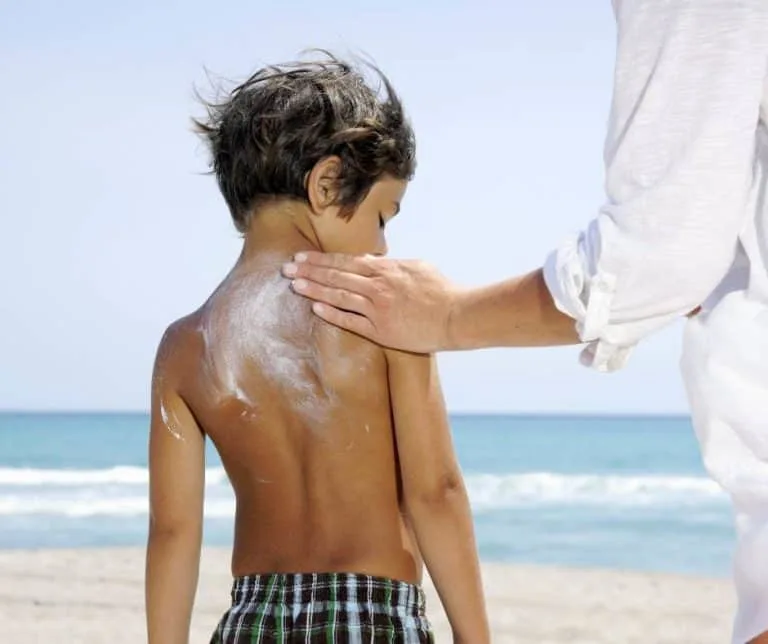
Don’t forget to bring sun protection, even on an overcast day. The cloud cover gives an illusion that you’re protected from harmful UV rays. High SPF counts, hats, and even long sleeves will be good coverage for when you’ve “forgotten the time” and are fully immersed in the beauty of the sea.
With these tips, we hope you can answer the question “Are tide pools safe?” Yes! With ocean smarts and respect for the water, a day at the tide pools will be a memorable day indeed.
Find tide pools around you to explore:
- Kid-friendly Tide pools in California
- Kid-friendly Tide Pools in Oregon
- Kid-friendly Tide Pools in Washington
- Kid-friendly Tide Pools on Oahu, Hawaii
- Kid-friendly Tide Pools in Maui, Hawaii
- Kid-friendly Tide Pools on Big Island of Hawaii
- Kid-friendly Tide Pools on the North Shore of Massachusetts
To learn more about education kids on the tide pools, see Field Guides and Resources to Teaching Kids about Tide Pools.
- Great Things to do in Bermuda on a Family Vacation - April 8, 2025
- See the Northern Lights- 13 Amazing Glass Igloo Hotels in Finland - April 8, 2025
- 20 Incredible Things to Do in Costa Rica with Kids on a Costa Rica Family Vacation - April 1, 2025

